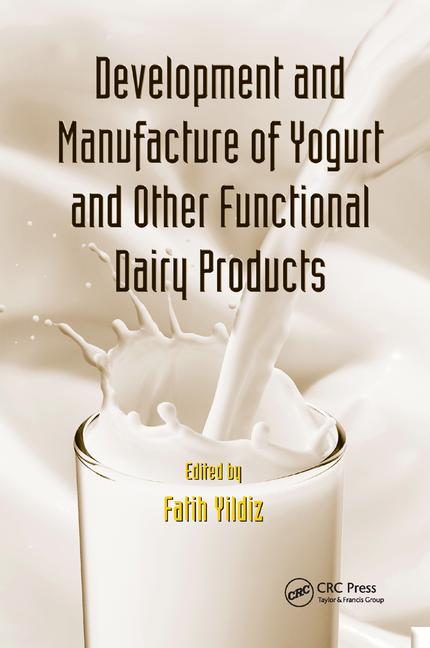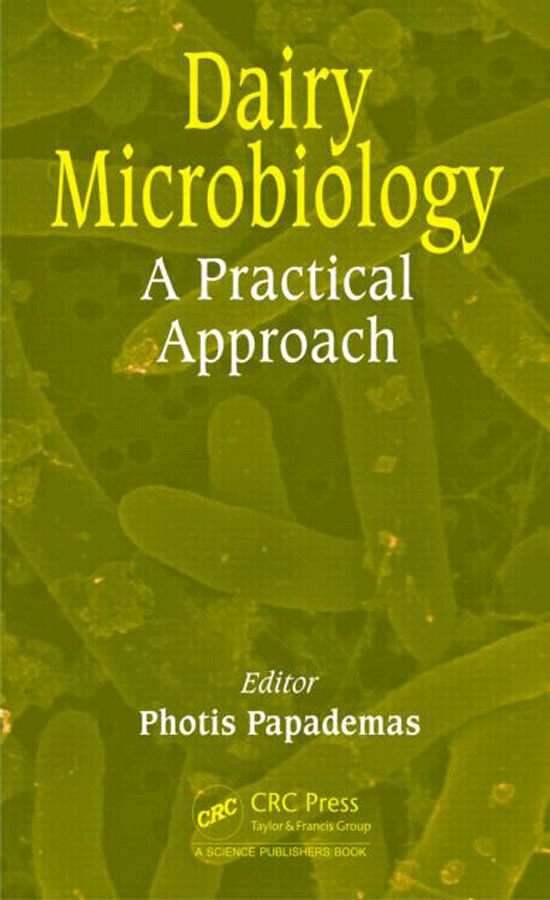Pasteurization is a matter of taste

The Tetra Alex 300 homogenizer/high-pressure pump allows for the efficient homogenization of pasteurized milk, UHT milk, cream, yogurt, condensed milk, ice cream mix, fruit juices and other high- or low-viscous products. The unit is available as a high-pressure pump for powders. It has a hygienic design that allows for ease of cleaning.

GEA PHE Systems will be displaying its new line of U.S.-produced NT sanitary frames at the International Dairy Show. The NT plates incorporate the patented OptiWave design with its ideal flow profile. This flow profile assures uniform flow as well as a consistent self-cleaning effect. The PosLoc design of the NT plates is a self-centering feature that provides optimal seating of the plates and, in turn, security that the user can count on in milk pasteurization.

The newest processor from MicroThermics is the Veros UHT/HTST processor. The equipment maker says its equipment is easy to use and provides production-quality processes in the lab.

AGC Heat Transfer estimates that over 70% of North American dairy plants utilize the company’s PlateCheck circulate method to inspect their pasteurizer. The circulate method can quickly test a complete pasteurizer in as few as three hours, according to the company.

The APV FX milk pasteurizer unit from SPX features automatic control of pasteurization temperature, automatic flow diversion and continuous recording for full traceability





Dairy processors are usually very generous with their time and information when they take Dairy Foods editors on a tour of their plant. But one question often causes them to clam up: How long and at what temperature do you pasteurize raw milk?
Time and temperature are two variables that affect the taste of milk, and taste is a competitive advantage for a processor. Dairies can set their own times and temperatures as long as they adhere to the minimum standards in the Pasteurized Milk Ordinance (see table).
“Longer time and higher temperature result in denaturing of protein [and the] release of sulfhydryl compounds which contribute to a cooked flavor,” said Rick Earley, Dairy & Beverage market manager for Admix Inc., Greensboro, N.C.
“An off or cooked taste can result with higher temperatures and longer hold times of milk,” noted Melissa Fryer of GEA PHE Systems. “This typically occurs with long hold times and temperatures above 185F due to the denaturation of the whey proteins in the milk,” said the segment manager for Food & Beverage of the York, Pa.-based equipment supplier.
“The PMO is regarded as the law in the U.S. and most dairy producers follow these standards,” said Mike Murdaugh of Stellar’s Stevens Point, Wis., office. “Managing time and temperature during pasteurization to achieve the best flavor is a balancing act. Dairy producers need to find the right balance without risking contamination.”
In the view of Process Technology Specialist Bill Snow of SPX Flow Technology, Delavan, Wis., “milk producers are not so much striving to keep their time and temperature secret, but aiming to get the best balance between taste and practical shelf life to meet distribution needs while ensuring public safety.”
The PMO “sets the benchmark for freshest taste. In many cases, however, a processor will set a higher temperature or time to ensure they protect public health and do not go below the regulation,” Snow said.
“There is a growing tendency for processors to move to extended shelf life processing which uses a higher temperature for a shorter time,” Snow said. “This method improves microbial kill but the short processing time (4 seconds or less) minimizes impact on taste. The results are often better than standard pasteurization as off-flavors are flashed off. “
Inspecting heat exchangers
A pasteurizer is a system consisting of a number of different components, including the heat exchanger, pumps, valves, controls, holder tubes, homogenizer and often other equipment such as de-aerators or separators, explained Anders Kold, the global product manager, homogenizers at SPX. Like any system, each individual piece of equipment needs to be maintained, inspected and tested regularly.
“At the heart of the typical pasteurization process is a plate heat exchanger,” said John Bohn, the founder and director of sales and marketing for AGC Heat Transfer, Bristow, Va.
Bohn serves as chairman of 3-A Sanitary Standards Inc.’s Workgroup 5 (heat exchangers). The group recommends testing a heat exchanger every 12 months.
“The test should be capable of detecting any leakage within the heat exchanger irrespective of the size,” Bohn said. “This wording was chosen to eliminate tests (such as helium, salt and bubble tests) that could provide erroneous results (due to the inaccuracies based on the size) and/or don’t include a detailed visual inspection. The test includes inspection of plates for pinholes, wear and corrosion, CIP (clean-in-place) response, gasket condition and frame condition.”
Heating and cooling cycles alter gaskets on plate heat exchangers, and tie-bolts stretch in length after a number of cycles, said Steve Bayse, a salesman at SPX. Plant managers should refer to technical manuals and follow the preventative maintenance recommendations.
The frequency of inspections and tests on a heat exchanger is dependent on the severity of the process conditions of the system, said GEA’s Fryer.
“A physical inspection of the gaskets should occur regularly to assure proper adhesion to the plates and ability to seal,” Fryer said. “Once a history of gasket wear is established, a replacement schedule can be determined. It is recommended that leak detection be performed at least once every year.”
Bayse said the heat exchanger should be opened and inspected for proper CIP cleaning and for the condition of gaskets and plates. This could be on a monthly or quarterly basis, but the exact timing should be based on the plant experience, he said.
“Visual inspection of the plates at this point may identify corrosion or wear before it becomes a serious problem,” Bayse said.
Testing pasteurizers, homogenizers
Pasteurizers “have a whole set of regular tests required by the regulatory agencies and are defined by the PMO,” said Kold. “These tests go beyond the manufacturer’s recommendations for service or maintenance, and address the actual validation of critical control points such as system flow rate, cut-in/cut-out temperature accuracy, flow diversion valve operation, differential pressure switch validation and many others.”
Homogenization efficiency
Kold said that for homogenizers, there are regular checks that need to be performed daily, such as checking oil levels and watching for product leakage at plunger packings. The condition of valves can be monitored with hydraulic pressure to predict when a change of valves is required.
He advised that between batches, the oil sump should also be checked to see if it contains any water which can significantly impact lubrication efficiency. While the homogenizer is stationary, water separates from the oil and can be easily drained off.
“On monthly or quarterly time periods, depending on product and hours of operation, a homogenizer should normally undergo a tear-down inspection of the liquid end of the machine, and changing of lubricants,” Kold said.
Processors should be measuring the efficiency of homogenizers, according to Tetra Pak, Vernon Hills, Ill. The equipment manufacturer said the most accurate methods of measuring homogenization effect in milk and other dairy products are the NIZO method (developed by the Dutch food research firm) and mapping the particle sizes with laser diffraction analysis.
The main objective with homogenization of milk is to reduce the size of the fat globules in order to stabilize the product and improve the quality, explained Tetra Pak’s Area Marketing Manager Marcus Heincke.
“In order to verify the product quality, it is necessary to analyze the milk after homogenization,” Heincke said. “The NIZO value is a way of determining the creaming rate by measuring the size of the fat globules. A high NIZO value means that the fat globules are small.”
For pasteurized milk, the NIZO value should normally be around 70%. UHT milk is pasteurized at ultra-high temperatures, resulting in shelf life measured in months rather than weeks. Thus, the fat globules need to be smaller so the NIZO value needs to be 85% to 90%, said Heincke.
“By taking a sample after homogenization, the current product quality can be verified in terms of NIZO. It is then possible to tell the customer which pressure reduction he can make and maintain end product quality,” he said.
Suppliers will be exhibiting their processing equipment at the International Dairy Show in Chicago, Nov. 3 to 6, held concurrently with Process Expo. The Dairy Foods Buyers Guide includes manufacturers of dairy processing equipment. See the July 2013 issue or go online to buyersguide.dairyfoods.com/buyersguide.
Time + temperature = taste and safety
From the Pasteurized Milk Ordinance: The terms “pasteurization,” “pasteurized” and similar terms shall mean the process of heating every particle of milk or milk product, in properly designed and operated equipment, to one (1) of the temperatures given in the following chart and held continuously at or above that temperature for at least the corresponding specified time:
Temperature Time
63C (145F)* 30 minutes
72C (161F)* 15 seconds
89C (191F) 1.0 second
90C (194F) 0.5 seconds
94C (201F) 0.1 seconds
96C (204F) 0.05 seconds
100C (212F) 0.01 seconds
*If the fat content of the milk product is 10% or greater, or a total solids of 18% or greater, or if it contains added sweeteners, the specified temperature shall be increased by 3C (5F).
Source: Food and Drug Administration , Pasteurized Milk Ordinance
Looking for a reprint of this article?
From high-res PDFs to custom plaques, order your copy today!












